 Rev.
Dr. Imre Bertalan was born in Nyirtass in Szabolcs County, Hungary
in 1918. He attended the Sárospatak Seminary, and did post-graduate
work in Halle, Germany, Basel, Zurich, and Geneva, Switzerland. Completing
his studies in Switzerland in 1946, he was unable to return to Hungary
due to first German and then Soviet occupation. Within a year, however,
he recieved a scholarship to Princeton Seminary in New Jersey. He accepted
his first post as a part-time pastor to the Hungarian Reformed Church
on Staten Island. He would eventually become the minister of the Hungarian
Reformed Church of Washington, D.C., in 1981. In 1980, he was elected
President of the Hungarian
Reformed Federation of America and led the organization until his
retirement in 1992. He holds an honorary degree of Doctor of Divinity
from Hope College in Holland, MI (1988), and from the Theological Faculty
of the Debrecen University (1989). He is President Emeritus of the American
Hungarian Federation and has served on the boards of the HRFA, the Hungarian
American Coalition, and the American Section of the World Alliance of
Hungarians. Rev. Bertalan has recently been awarded the "A Magyar
Köztársaság Tisztikeresztje." On September 25th,
he was honored by his congregation as he celebrated 25 years of Pastoral
service. Rev. Bertalan passed away on July 10, 2008. AHF mourns his loss. See his eMemorial Rev.
Dr. Imre Bertalan was born in Nyirtass in Szabolcs County, Hungary
in 1918. He attended the Sárospatak Seminary, and did post-graduate
work in Halle, Germany, Basel, Zurich, and Geneva, Switzerland. Completing
his studies in Switzerland in 1946, he was unable to return to Hungary
due to first German and then Soviet occupation. Within a year, however,
he recieved a scholarship to Princeton Seminary in New Jersey. He accepted
his first post as a part-time pastor to the Hungarian Reformed Church
on Staten Island. He would eventually become the minister of the Hungarian
Reformed Church of Washington, D.C., in 1981. In 1980, he was elected
President of the Hungarian
Reformed Federation of America and led the organization until his
retirement in 1992. He holds an honorary degree of Doctor of Divinity
from Hope College in Holland, MI (1988), and from the Theological Faculty
of the Debrecen University (1989). He is President Emeritus of the American
Hungarian Federation and has served on the boards of the HRFA, the Hungarian
American Coalition, and the American Section of the World Alliance of
Hungarians. Rev. Bertalan has recently been awarded the "A Magyar
Köztársaság Tisztikeresztje." On September 25th,
he was honored by his congregation as he celebrated 25 years of Pastoral
service. Rev. Bertalan passed away on July 10, 2008. AHF mourns his loss. See his eMemorial
 Les
Besser, Microwave Engineer: Les
Besser, Microwave Engineer:
“The father of microwave computer-aided design"
Les (Laszlo) Besser, was national under-16 year hurdle record holder
in 1952, graduated from Kando Kalman technical school in 1954, and won
two Hungarian national junior championships in 1955. Escaping to Canada
after the 1956 revolution, he continued with his running career, and received
a track scholarship to study electrical engineering in the US. At the
University of Colorado he received the Pacesetter Award and was selected
to be “The Outstanding Engineering Student” and co-captain
of the school’s soccer team in 1966.
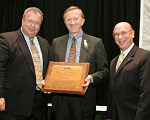 After
gaining practical engineering experience at Hewlett Packard and Fairchild
corporations, he authored COMPACT (Computerized Optimization of Microwave
Passive and Active CircuiTs), the world’s first commercially successful
microwave circuit optimization routine, soon to become the industry standard.
He then founded Compact Software, a pioneer CAD software company (now
part of Ansoft), and was active in serving the engineering design After
gaining practical engineering experience at Hewlett Packard and Fairchild
corporations, he authored COMPACT (Computerized Optimization of Microwave
Passive and Active CircuiTs), the world’s first commercially successful
microwave circuit optimization routine, soon to become the industry standard.
He then founded Compact Software, a pioneer CAD software company (now
part of Ansoft), and was active in serving the engineering design 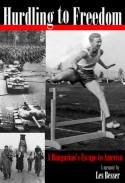 needs
of the RF/Microwave industry during the next ten years. In 1980, his company
merged with Communication Satellite Corporation (COMSAT) where Dr. Besser
functioned as a Senior Vice President. In 1985, recognizing the need for advanced continuing education, he started
Besser Associates, a training organization that has provided live training
to more than 45,000 engineers, managers, and technicians world-wide, retiring
from the company in 2004. In 2007, The Institute of Electrical and Electronics
Engineers (IEEE) conferred on him the "Meritorious Achievement Award
in Continuing Education." In 2012, The Hewlett Packard Memory Project published Les's memoirs entitled, "Hurdling to Freedom: A Hungarian's Escape to America" [read more] needs
of the RF/Microwave industry during the next ten years. In 1980, his company
merged with Communication Satellite Corporation (COMSAT) where Dr. Besser
functioned as a Senior Vice President. In 1985, recognizing the need for advanced continuing education, he started
Besser Associates, a training organization that has provided live training
to more than 45,000 engineers, managers, and technicians world-wide, retiring
from the company in 2004. In 2007, The Institute of Electrical and Electronics
Engineers (IEEE) conferred on him the "Meritorious Achievement Award
in Continuing Education." In 2012, The Hewlett Packard Memory Project published Les's memoirs entitled, "Hurdling to Freedom: A Hungarian's Escape to America" [read more]
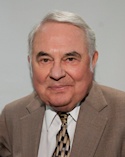 AHF Board Member Dr. Bela J.
Bognar, Professor Emeritus of Social Work and Gerontology at Wright State University, founded the Hungarian Scholarship Fund (HSF) to finance the educational
needs of needy students of Hungarian descent. The HSF is a tax-exempt organization. HSF's goal is to fund students regardless of the educational areas they pursue. In the past and present, there have been and are students in medicine and health, law, theology, business, natural science, education, the humanities and the arts. Students funded are economically disadvantaged and live in Hungary and in the lands which were separated from Hungary at the Treaty of Trianon following WWI costing Hungary 2/3 of her territory, 1/3 of her Hungarian population and vast natural resources. In addition to AHF, other major Fund benefactors include Doris Buffett, sister of the famous investor, Warren and head of the Sunshine Ladies Foundation for which Prof. Bognar is also a "Sunbeam" volunteer. Dr. Bognar is affectionately known as "Professor Paprika" as he raises scholarship funds through the annual sale of his own garden-grown peppers. [Read more] AHF Board Member Dr. Bela J.
Bognar, Professor Emeritus of Social Work and Gerontology at Wright State University, founded the Hungarian Scholarship Fund (HSF) to finance the educational
needs of needy students of Hungarian descent. The HSF is a tax-exempt organization. HSF's goal is to fund students regardless of the educational areas they pursue. In the past and present, there have been and are students in medicine and health, law, theology, business, natural science, education, the humanities and the arts. Students funded are economically disadvantaged and live in Hungary and in the lands which were separated from Hungary at the Treaty of Trianon following WWI costing Hungary 2/3 of her territory, 1/3 of her Hungarian population and vast natural resources. In addition to AHF, other major Fund benefactors include Doris Buffett, sister of the famous investor, Warren and head of the Sunshine Ladies Foundation for which Prof. Bognar is also a "Sunbeam" volunteer. Dr. Bognar is affectionately known as "Professor Paprika" as he raises scholarship funds through the annual sale of his own garden-grown peppers. [Read more]
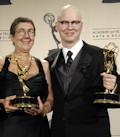 Steve Bognar, Emmy Award-winning filmmaker and 2010 Oscar Nominee for "The Last Truck," a documentary about the closing of a General Motors plant in Moraine Ohio. The documentary aired on HBO in 2009. He is the son of a proud father, and AHF Scholarship Committee Chair, Bela Bognar, a.k.a., "Professor Paprika." Bognar is former assistant professor of media arts at Antioch College and has worked as a filmmaker-in-residence in schools throughout Ohio. Bognar’s work has been funded by the National Endowment for the Arts, The Soros Documentary Fund, the Creative Capital Foundation, the Ohio Humanities Council, the Ohio Arts Council and Culture Works. He is also a Rockefeller Fellow. [Read more] about him and [buy his films]! Steve Bognar, Emmy Award-winning filmmaker and 2010 Oscar Nominee for "The Last Truck," a documentary about the closing of a General Motors plant in Moraine Ohio. The documentary aired on HBO in 2009. He is the son of a proud father, and AHF Scholarship Committee Chair, Bela Bognar, a.k.a., "Professor Paprika." Bognar is former assistant professor of media arts at Antioch College and has worked as a filmmaker-in-residence in schools throughout Ohio. Bognar’s work has been funded by the National Endowment for the Arts, The Soros Documentary Fund, the Creative Capital Foundation, the Ohio Humanities Council, the Ohio Arts Council and Culture Works. He is also a Rockefeller Fellow. [Read more] about him and [buy his films]!
 Laszlo
"Laz" Buda is the son of Hungarian immigrants and is
a native of Cleveland. He holds a Bachelors degree in Mechanical Engineering
from Carnegie Mellon University where he was a 3-year letterman in football,
as well as a Masters degrees in Mechanical Engineering and an MBA from
Washington University in St. Louis. He currently works as a Six Sigma
Black Belt for Avery Dennison Corporation. His past employers include
The Boeing Company in St. Louis, Eaton Corp. in Cleveland, and North American
Bus Industries in Kaposvár, Hungary. Laszlo
"Laz" Buda is the son of Hungarian immigrants and is
a native of Cleveland. He holds a Bachelors degree in Mechanical Engineering
from Carnegie Mellon University where he was a 3-year letterman in football,
as well as a Masters degrees in Mechanical Engineering and an MBA from
Washington University in St. Louis. He currently works as a Six Sigma
Black Belt for Avery Dennison Corporation. His past employers include
The Boeing Company in St. Louis, Eaton Corp. in Cleveland, and North American
Bus Industries in Kaposvár, Hungary.
In addition to role as Chairman of the Friends of United Way-Hungary Committee,
Laszlo is active in the Cleveland Hungarian community regularly reciting
poems at the 1848 and 1956 commemoration events, and successfully co-led
the fundraising efforts for "Hungarians
for the International Childrens Games" (HICG) which brought over
110 teen athletes, coaches, and officials from seven Hungarian cities
to Cleveland and Washington DC in August 2004.
 Friends
of United Way-Hungary (www.unitedway.hu)
was founded in 2004 to promote and support United Way-Hungary in North
America. United Way-Hungary is an affiliate of United Way-International
(www.uwint.org) which
is based in Alexandria, VA. Laci is raising funds for United Way
Hungary by riding his bicycle 1956 miles by October 23, 2006. He is seeking
pledges/sponsorships in this 50th anniversary year of the Hungarian Revolution.
"Laz" rode 1210 miles last year, so this would be 50% more -
quite a physical challenge! Make a pledge and contact him at lazbuda@yahoo.com.
See www.1956in2006.org Friends
of United Way-Hungary (www.unitedway.hu)
was founded in 2004 to promote and support United Way-Hungary in North
America. United Way-Hungary is an affiliate of United Way-International
(www.uwint.org) which
is based in Alexandria, VA. Laci is raising funds for United Way
Hungary by riding his bicycle 1956 miles by October 23, 2006. He is seeking
pledges/sponsorships in this 50th anniversary year of the Hungarian Revolution.
"Laz" rode 1210 miles last year, so this would be 50% more -
quite a physical challenge! Make a pledge and contact him at lazbuda@yahoo.com.
See www.1956in2006.org
 Professor
Andrew Davidhazy is one the world's foremost experts on technical
/ scientific photograpahy. He is a Professor and Chairman of the Imaging
and Photographic Technology Department, School of Photographic Arts and
Sciences, Rochester Institute of Technology (RIT). Professor
Andrew Davidhazy is one the world's foremost experts on technical
/ scientific photograpahy. He is a Professor and Chairman of the Imaging
and Photographic Technology Department, School of Photographic Arts and
Sciences, Rochester Institute of Technology (RIT).  Prof.
Davidhazy's work in high-speed photography, as seen here in his famous
"splash," is well-recognized. His father was a captain in the
Hungarian merchant marine who later moved to Argentina and then to the
US and was influential in shipbuilding industry. His long-term interest
has been the field of scanning or strip photography. This started in the
mid-60's and extends to this day. Applications include panoramic, peripheral,
photofinish, and other derivatives of an "ingenious" approach
to image-making. He served on the House Select Committee the reexamination
of the photographs of Lee Harvey Oswald and was called upon to authenticate
a photograph of O. J. Simpson wearing some shoes he claimed never to have
owned! [See his
personal site] Prof.
Davidhazy's work in high-speed photography, as seen here in his famous
"splash," is well-recognized. His father was a captain in the
Hungarian merchant marine who later moved to Argentina and then to the
US and was influential in shipbuilding industry. His long-term interest
has been the field of scanning or strip photography. This started in the
mid-60's and extends to this day. Applications include panoramic, peripheral,
photofinish, and other derivatives of an "ingenious" approach
to image-making. He served on the House Select Committee the reexamination
of the photographs of Lee Harvey Oswald and was called upon to authenticate
a photograph of O. J. Simpson wearing some shoes he claimed never to have
owned! [See his
personal site]
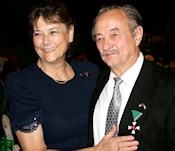 László G. Fülöp was raised in the towns of Tiszakécske, Máramarossziget (now in Rumania), and Szentendre. He was conscripted to a forced labor division in Komló and Budapest in 1954-55. In 1956, he took an active role in the Hungarian Revolution, then fled to Austria in January of 1957. He studied architecture in Vienna, Austria and at the University of Minnesota; he worked in private practice, then at the Universities of Minnesota and Wisconsin as Director of Planning and Construction 1975-90. With his wife Ágnes Sylvester, Mr. Fülöp has long been a member of the American Hungarian Federation and leader of the Minnesota Hungarians. He is also a Board Member of the American Hungarian Federation and a former President of the Hungarian Community of Friends. On 29 September, 2008, Mr. Fülöp was awarded the Officer’s Cross of the Order of Merit of the Republic of Hungary from by President Sólyom László as conveyed by Kinga Göncz, Hungarian Minister of Foreign Affairs. [Read more and see his books] László G. Fülöp was raised in the towns of Tiszakécske, Máramarossziget (now in Rumania), and Szentendre. He was conscripted to a forced labor division in Komló and Budapest in 1954-55. In 1956, he took an active role in the Hungarian Revolution, then fled to Austria in January of 1957. He studied architecture in Vienna, Austria and at the University of Minnesota; he worked in private practice, then at the Universities of Minnesota and Wisconsin as Director of Planning and Construction 1975-90. With his wife Ágnes Sylvester, Mr. Fülöp has long been a member of the American Hungarian Federation and leader of the Minnesota Hungarians. He is also a Board Member of the American Hungarian Federation and a former President of the Hungarian Community of Friends. On 29 September, 2008, Mr. Fülöp was awarded the Officer’s Cross of the Order of Merit of the Republic of Hungary from by President Sólyom László as conveyed by Kinga Göncz, Hungarian Minister of Foreign Affairs. [Read more and see his books]
 Pianist
and composer Laszlo Gardony has been recognized worldwide
for his extraordinary musicianship and is known as a "Hungarian Rhapsodist."
He has released six albums, has toured in 22 countries, won numerous awards,
and appeared on television and radio programs throughout the world. In
1987, Laszlo won First Prize at The Great American Jazz Piano Competition.
JazzTimes has called him "one of contemporary music's truly original
voices." Born in Hungary, Laszlo was improvising on the piano by
the time he was five, showing an early talent for composing music. In
1976, Laszlo entered the Bela Bartok Conservatory where he studied African
music and jazz along with Eastern European and 20th century classical
composers. During this time he has also been attending the Science University
of Budapest. He graduated from both schools in 1979. Pianist
and composer Laszlo Gardony has been recognized worldwide
for his extraordinary musicianship and is known as a "Hungarian Rhapsodist."
He has released six albums, has toured in 22 countries, won numerous awards,
and appeared on television and radio programs throughout the world. In
1987, Laszlo won First Prize at The Great American Jazz Piano Competition.
JazzTimes has called him "one of contemporary music's truly original
voices." Born in Hungary, Laszlo was improvising on the piano by
the time he was five, showing an early talent for composing music. In
1976, Laszlo entered the Bela Bartok Conservatory where he studied African
music and jazz along with Eastern European and 20th century classical
composers. During this time he has also been attending the Science University
of Budapest. He graduated from both schools in 1979.
After leaving the Conservatory, Laszlo went on to become a successful
session player in Europe, toured extensively and recorded eight albums.
In 1983 he left for Boston, where he received a full scholarship to Berklee
College of Music. Laszlo graduated from Berklee in 1985, and joined the
faculty two years later. Read more about him on his official site on www.lgjazz.com.
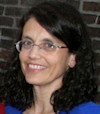 Kitty Gogins' maiden name is Kitty Aniko Zoltai. Kitty Gogins' maiden name is Kitty Aniko Zoltai. 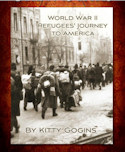 Her parents have always called her 'Kati' or 'Katika'. Since her early childhood, she has been active in the Minnesota Hungarians,especially volunteering at the Festival of Nations, helping with theChristmas party, and as a Videki Hungarian dancer.From an early age, she has been fascinated with her parents’ journey to become Americans.The longer she worked in leading strategic and cultural change, the more appreciation she felt for their incredible cultural journey. "I feel honored to have had the opportunity to recently publish their story, 'My Flag Grew Stars: World War II Refugees’ Journey to America," she said. [read more] Her parents have always called her 'Kati' or 'Katika'. Since her early childhood, she has been active in the Minnesota Hungarians,especially volunteering at the Festival of Nations, helping with theChristmas party, and as a Videki Hungarian dancer.From an early age, she has been fascinated with her parents’ journey to become Americans.The longer she worked in leading strategic and cultural change, the more appreciation she felt for their incredible cultural journey. "I feel honored to have had the opportunity to recently publish their story, 'My Flag Grew Stars: World War II Refugees’ Journey to America," she said. [read more]
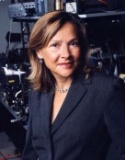 Naomi Halas, D.Sci, Ph.D.,
Nanotechnology and Plasmon Pioneer Naomi Halas, D.Sci, Ph.D.,
Nanotechnology and Plasmon Pioneer
Dr. Naomi Halas (Halász) is the Stanley C. Moore Chair of Electrical and Computer Engineering at Rice University where she holds faculty appointments in the Departments of Physics and Astronomy, Chemistry, and Bioengineering and leads the Halas Research Group for
Nanoengineered Photonics and Plasmonics. She is a pioneering nanotechnologist seeking practical applications for her work.
She is known as the inventor of nanoparticles with tunable optical properties controlled by their shape and structure and pursues fundamental studies of light-nanoparticle interactions that give rise to new properties and effects, leading to useful applications in biomedicine, chemical sensing, and energy. Her "gold nanoshells" (tiny glass nanoparticles coated in gold) are
so small that 1,000 would fit across the width of a human hair and absorb large amounts of light, resulting in a dramatic rise in their temperature. They interact with the widest possible spectrum of sunlight energy and can be tuned to absorb specific wavelengths of light. For example, when light passes harmlessly through the human body, that light hits the injested nanoshells where they grow hot enough to burn away targeted nearby tissue such as a tumor. Later research revealed this same behavior could turn ice water into steam with sunlight, leading to far-reaching implications for disinfection, water distillation and desalinization, and green energy. With over 200 publication and election to Fellow of the American Physical Society, Dr. Halas' scientific career and history of innovation is nothing less then remarkable and a great source of pride for the Hungarian-American community. [read more]
 Prof.
Peter Hargitai wrote his first poem during the 1956 Hungarian Revolution,
when he was nine years old. Professor Hargitai grew up in the tiny village
of Balástya in southern Hungary. He and his family fled the country
in the aftermath of the Hungarian Revolution. They settled in the United
States where he obtained a Master of Fine Arts degree from the University
of Massachusetts at Amherst. Since then, he has published several books
and award-winning translations from Hungarian literature for which he
was awarded the Pro Cultura Hungarica medal from the Republic of Hungary.
He has taught at several American universities including the University
of Miami, the University of Massachusetts, and Florida International University
where he is currently on the English faculty. Prof.
Peter Hargitai wrote his first poem during the 1956 Hungarian Revolution,
when he was nine years old. Professor Hargitai grew up in the tiny village
of Balástya in southern Hungary. He and his family fled the country
in the aftermath of the Hungarian Revolution. They settled in the United
States where he obtained a Master of Fine Arts degree from the University
of Massachusetts at Amherst. Since then, he has published several books
and award-winning translations from Hungarian literature for which he
was awarded the Pro Cultura Hungarica medal from the Republic of Hungary.
He has taught at several American universities including the University
of Miami, the University of Massachusetts, and Florida International University
where he is currently on the English faculty.
His book of translations of Attila József, Perched on Nothing's
Branch is listed in Harold Bloom's The Western Canon. Peter Hargitai is
also past recipient of the Landon Translation Award from the American  Academy
of Poets and The Füst Milán Award from the Hungarian Academy
of Sciences. His most recent work, "Daughter of the Revolution,"
a story of a brave freedom fighter - a 14 year-old girl - coincides with
the 50th Anniversary of the ill-fated Hungarian Revolution of 1956. [Read
more] about this book. Professor Peter Hargitai is a 2006 recipient
of the Col. Commandant
Michael Kovats Medal of Freedom. Academy
of Poets and The Füst Milán Award from the Hungarian Academy
of Sciences. His most recent work, "Daughter of the Revolution,"
a story of a brave freedom fighter - a 14 year-old girl - coincides with
the 50th Anniversary of the ill-fated Hungarian Revolution of 1956. [Read
more] about this book. Professor Peter Hargitai is a 2006 recipient
of the Col. Commandant
Michael Kovats Medal of Freedom.
His other books are available for purchase on the AHF bookstore on  . .
 Magdalina "Maggie" Herczeg became an AHF Freedom Circle Member in 2006. She is always interested in reading about American Hungarians as she finds their life stories and accomplishments fascinating. To her, it all goes back to the pursuit of the "American Dream." She earned a BA in music with piano as her primary instrument, voice being secondary. She went on to earn her MBA. After teaching music in the NJ public school system for a few years, she transitioned to the business world and has spent the last 23 years working in the pharmaceutical industry; specifically for Schering-Plough (now Merck), as a sales representative. [read more] Magdalina "Maggie" Herczeg became an AHF Freedom Circle Member in 2006. She is always interested in reading about American Hungarians as she finds their life stories and accomplishments fascinating. To her, it all goes back to the pursuit of the "American Dream." She earned a BA in music with piano as her primary instrument, voice being secondary. She went on to earn her MBA. After teaching music in the NJ public school system for a few years, she transitioned to the business world and has spent the last 23 years working in the pharmaceutical industry; specifically for Schering-Plough (now Merck), as a sales representative. [read more]
 The HungarianAmerica Foundation... The HungarianAmerica Foundation...
Reaching out to the next generation is perhaps the greatest challenge
for AHF and other Hungarian organizations in the United States. AHF is
pleased to announce that one of the most active and dynamic organizations
in Washington DC has joined us. The HungarianAmerica
Foundation was founded in 2003, for charitable, scientific, literary,
and educational purposes. [more]
 Major
General Robert Ivany, Ph.D. (b. Hungary, 1949) Major
General Robert Ivany, Ph.D. (b. Hungary, 1949)
West Point Graduate; West Point (Army) Football Coach; Commanding General,
Military District of Washington; Commandant of the War College; and currently
President of the University of St. Thomas, Houston.
Three-year-old Robert Ivany, the son of World War II refugees
from Hungary, immigrated to the United States with his parents following
the war. He grew up in Cleveland and eventually graduated from the United
States Military Academy in 1969. Over the course of his 34 years of dedicated
service in the United States Army as an armored cavalry officer, he led
soldiers in the United States, Kuwait, Saudi Arabia, Germany and Vietnam
where he was wounded in action and decorated for valor. He assisted several
nations in the transformation of their armed forces. In 1990, Robert Ivany
was the first senior military officer invited to Hungary to contribute
to the democratization of their defense establishment.
General Ivany taught history at West Point, coached the West Point football
team, spent 2 years as an aide to President Ronald Reagan, and commanded
forces throughout the world. In July 1998, Major General Ivany was assigned
as the Commanding General, Military District of Washington. General Ivany's
career culminated with his appointment as the 45th Commandant of the War
College at Carlisle Barracks, the Army's foremost institution for educating
its leaders. Dr. Ivany retired from the Army on September 30, 2003 and
is now President of Houston's University of St. Thomas.
Dr. Ivany is a recipient of the 2006
Col. Commandant Michael Kovats Medal of Freedom from the American
Hungarian Federation. He is also recipient of the General Dwight D. Eisenhower
Award for Excellence in Military Writing. An expert on leadership development,
he is presently conducting research on the leadership attributes of 20
generals and admirals who have transitioned to corporate leadership. In
addition to earning a Bachelor of Science degree from the U.S. Military
Academy at West Point, he received a Ph.D. in Modern European History
from the University of W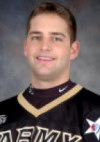 isconsin
in Madison. isconsin
in Madison.
AHF is especially pleased to congratulate him and wife Marianne
on their son's upcoming graduation from West Point! Brian Ivany,
the 6'1", 200 lb midfielder, is a two-year letterwinner in Lacrosse.
He is major in American Legal System. His brother Chris Ivany is a captain
in the U.S. Army while another brother, Mark, is a 2nd Lt. in the U.S.
Army.
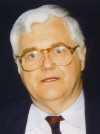 Dr. Geza
Julius Jako (Szalardi- von Jako), White House Advisor for Cancer to Presidents
Reagan and Bush Sr. Inventor of soft tissue microsurgery, laser surgery,
minimally invasive surgery. Pioneer of human cochlear stimulation for
deafness. Physician, scientist, educator." A 1956 Freedom
Fighter remembered for his role in establishing emergency medical services
in Budapest at the start of the ill-fated Hungarian Revolution, he went
on to become a Professor of Head and Neck Surgery at Boston Univ and to
receive staff appointments from Harvard Medical School, MIT, and North
Eastern University for Dr. Geza
Julius Jako (Szalardi- von Jako), White House Advisor for Cancer to Presidents
Reagan and Bush Sr. Inventor of soft tissue microsurgery, laser surgery,
minimally invasive surgery. Pioneer of human cochlear stimulation for
deafness. Physician, scientist, educator." A 1956 Freedom
Fighter remembered for his role in establishing emergency medical services
in Budapest at the start of the ill-fated Hungarian Revolution, he went
on to become a Professor of Head and Neck Surgery at Boston Univ and to
receive staff appointments from Harvard Medical School, MIT, and North
Eastern University for 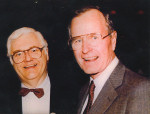 Biomedical
Engineering. In addition, he has had four Presidential White House appointments
(among them 8 years with President Reagan) and served at the highest levels
of the National Institutes of Health (NIH). Biomedical
Engineering. In addition, he has had four Presidential White House appointments
(among them 8 years with President Reagan) and served at the highest levels
of the National Institutes of Health (NIH).
Dr. Jako (pronounced yuh-ko) has hundreds of peer reviewed journal articles,
books and chapters in surgery. His students have gone on top be some of
the top ENT surgeons in the world. He holds several patents and the only
patents on Lasers in medicine and endo-micro instruments. His first lasers
are displayed in museums in Washington D.C. and in the Hungarian National
Museum in Budapest in the section of Hungary's most significant scientists
featuring Edward Teller, Albert Szentgyorgyi, and many others. His instruments
and surgical techniques have become the "gold-standard' for head
and neck surgery worldwide and in the fight against laryngeal cancer that
today has saved hundreds of thousands of voice boxes. 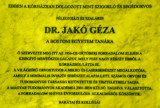 He
was forced to flee to the West as a graduate medical student and today
has a few historic commemorative plaque and tablets to his contributions
during the '56 revolution at the significant sites during the battles.
One of these shown here is at the hospital that became a focal point of
the revolution and mentioned in several papers and film documentaries
for 1956. He
was forced to flee to the West as a graduate medical student and today
has a few historic commemorative plaque and tablets to his contributions
during the '56 revolution at the significant sites during the battles.
One of these shown here is at the hospital that became a focal point of
the revolution and mentioned in several papers and film documentaries
for 1956.
Download his [Full
Biography] or see him and other great Hungarians on the amazing [Nobel
Prize Winners and Famous Hungarians] site.
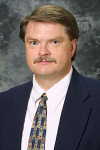 AHF Freedom Circle Member Balint Kacsoh, MD, PhD, is a professor of anatomy, histology and cell biology, and physiology at Mercer Univiersity's Medical School in Macon, GA where he joined the faculty in 1992. He and his wife, a pediatrician in private practice in Macon, both came from Hungary in 1986 and hold dual citizenship. They have three children, the oldest already in university. They are members of the Hungarian Reformed Church. AHF Freedom Circle Member Balint Kacsoh, MD, PhD, is a professor of anatomy, histology and cell biology, and physiology at Mercer Univiersity's Medical School in Macon, GA where he joined the faculty in 1992. He and his wife, a pediatrician in private practice in Macon, both came from Hungary in 1986 and hold dual citizenship. They have three children, the oldest already in university. They are members of the Hungarian Reformed Church.
He is the author of the medical book, "Endocrine Physiology" and most recently translated "The Frontier Garrison," the first English translation of "Az elõretolt helyõrség" by the Hungarian novelist Jenõ Rejtõ (1905-1943), originally published in 1939 under the pen name of “P. Howard.” He also annotated the edition. Rejto is perhaps the most popular and widely-read fiction novelist in Hungary, entrenched in Hungarian popular culture. [Read more about The Frontier Garrison] or go directly to buy his books on the AHF Amazon Store! 
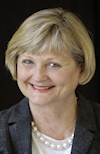 Katalin Kádár
Lynn, Ph.D. was born in Budapest and emigrated with her family
to Germany at the end of WWII and then came to the US as part of the Displaced
Persons immigration program. She was educated in the United States ( BA
from the University of Colorado and an MLA from Washington University
in St. Louis, MO). After a long career in the world of business, including
a stint as a business professor at Lindenwood University in St. Charles,
MO, she returned to graduate school to obtain a PhD at ELTE in Budapest and was awarded her PhD with honors. Katalin Kádár
Lynn, Ph.D. was born in Budapest and emigrated with her family
to Germany at the end of WWII and then came to the US as part of the Displaced
Persons immigration program. She was educated in the United States ( BA
from the University of Colorado and an MLA from Washington University
in St. Louis, MO). After a long career in the world of business, including
a stint as a business professor at Lindenwood University in St. Charles,
MO, she returned to graduate school to obtain a PhD at ELTE in Budapest and was awarded her PhD with honors.
Katalin's area of specialization is 20th century history, with an emphasis on
WWII, the Cold War, and U.S.–East European political relations
and Émigré Political Movements. Since she returned to graduate
school to pursue her doctorate, she had several research papers published
both in the US and in Hungary. Her dissertation, topic, “Tibor Eckhardt
his American Years 1941-1972," was published
in 2007 by L’Harmattan Press, Paris and Budapest in Hungarian
and in English by East European Monographs, Boulder and distributed by
Columbia University Press. The Introduction to her book on Tibor Eckhardt
with personal reminiscences about him, was graciously written by Dr. Otto
von Habsburg, a friend of long standing of Tibor Eckhardt. She also edited
the posthumously published autobiography of Tibor Eckhardt (Tibor Eckhardt
in His Own Words) published in June 2005 by East European Monographs and
Columbia University Press. Read about Tibor and his work with AHF on the Movement for an Independent Hungary which sought to extracate Hungary from the Axis sphere. Read more about her and purchase her books!
 Bobbie
Kalman, an AHF Kovats Circle Member, is co-founder of Crabtree
Publishing Company and one of the most prolific authors of children's
books. She recently completed a book targeted at older children, chronicling
her experiences as a 9-year-old in the Hungarian Revolution of 1956, entitled
"Refugee Child." AHF is proud to endorse this book: Bobbie
Kalman, an AHF Kovats Circle Member, is co-founder of Crabtree
Publishing Company and one of the most prolific authors of children's
books. She recently completed a book targeted at older children, chronicling
her experiences as a 9-year-old in the Hungarian Revolution of 1956, entitled
"Refugee Child." AHF is proud to endorse this book:
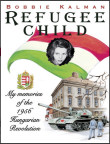 "1956
saw the first tear in the Iron Curtain. A people rose up against impossible
odds and fought for freedom only to be brutally crushed by the Soviet
military machine. 200,000 would flee across the minefields to freedom.
What must this have been like for a 9-year-old girl and the parents that
tried to protect her? "The Soviets occupied our country and wanted
Hungarians to forget who we were." But Bobbie's own memories make
sure we do not forget. A bittersweet tale of innocence, fascination, fear,
courage, compassion, and re-awakening, "Refugee Child" is filled
with descriptive illustrations and gives us a unique glimpse of this historic
time from the perspective of a wide-eyed young girl. This is a must read
for children and grown ups alike. We must never forget." - Bryan
Dawson-Szilagyi, Executive Committee Chairman, American Hungarian Federation. "1956
saw the first tear in the Iron Curtain. A people rose up against impossible
odds and fought for freedom only to be brutally crushed by the Soviet
military machine. 200,000 would flee across the minefields to freedom.
What must this have been like for a 9-year-old girl and the parents that
tried to protect her? "The Soviets occupied our country and wanted
Hungarians to forget who we were." But Bobbie's own memories make
sure we do not forget. A bittersweet tale of innocence, fascination, fear,
courage, compassion, and re-awakening, "Refugee Child" is filled
with descriptive illustrations and gives us a unique glimpse of this historic
time from the perspective of a wide-eyed young girl. This is a must read
for children and grown ups alike. We must never forget." - Bryan
Dawson-Szilagyi, Executive Committee Chairman, American Hungarian Federation.
Bobbie is the author and publisher of several hundred children's books.
She has created many of Crabtree's most popular series, including Historic
Communities, Lands, Peoples, and Cultures, Kid Power, Native Nations of
North America, Dolphin Worlds, Life Cycles, Food Chains, and many more.
Bobbie's books are extremely successful in schools and public libraries
because she writes them with specific curriculum needs in mind. She works
with a team of creative writers who thoroughly research each subject.
Bobbie has taught at both the elementary and secondary levels and has
traveled extensively. [Read more]
or buy now on 
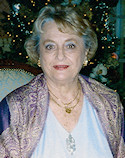 Born in Budapest, Éva B. Kisvarsányi was a Junior at the Eötvös Loránd
University in Budapest in 1956, majoring in geology. She participated in the students' march on October 23 under the banner of the University as the 1956 Hungarian Revolution began. After November
4, she and her husband, Géza Kisvarsányi, waited in vain for a month for help
from the West, and escaped to Austria in December. The Kisvarsányi's arrived in
the United States on January 16, 1957, and moved to Missouri. Eva continued
her study of geology at the University of Missouri, and earned a Bachelor of
Science in Geology in 1958, followed by a Born in Budapest, Éva B. Kisvarsányi was a Junior at the Eötvös Loránd
University in Budapest in 1956, majoring in geology. She participated in the students' march on October 23 under the banner of the University as the 1956 Hungarian Revolution began. After November
4, she and her husband, Géza Kisvarsányi, waited in vain for a month for help
from the West, and escaped to Austria in December. The Kisvarsányi's arrived in
the United States on January 16, 1957, and moved to Missouri. Eva continued
her study of geology at the University of Missouri, and earned a Bachelor of
Science in Geology in 1958, followed by a 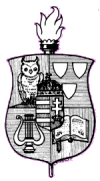 Master of Science in Geology in 1960
from that institution. From 1959 to 1993, she was employed at the Missouri
State Geological Survey, rising from the rank of research geoJogist through
Section Chief to Assistant Director. She has published more than 100 scientific
research papers, maps and books in the field of Precambrian geology. She retired
in 1993 and moved to Sarasota, Florida where she is the Executive Director of the Hungarian American
Cultural Association, Inc., The Kossuth Club of Sarasota, and founder and editor of the Club's newsletter, The
Hírmondó. Her books are available on the AHF Amazon Store! Master of Science in Geology in 1960
from that institution. From 1959 to 1993, she was employed at the Missouri
State Geological Survey, rising from the rank of research geoJogist through
Section Chief to Assistant Director. She has published more than 100 scientific
research papers, maps and books in the field of Precambrian geology. She retired
in 1993 and moved to Sarasota, Florida where she is the Executive Director of the Hungarian American
Cultural Association, Inc., The Kossuth Club of Sarasota, and founder and editor of the Club's newsletter, The
Hírmondó. Her books are available on the AHF Amazon Store!  [read more] about Eva! [read more] about Eva!
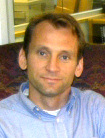 Atilla
Kocsis is a member of AHF's Executive Committee, directs operations for AHF's Washington D.C. office, and acting Secretary. As a young entrepreneur,
Atilla started a Website hosting business in 1995 which has grown into
a highly successful operation. We thank him and Digital
Phenom for hosting the AHF Website! Atilla
Kocsis is a member of AHF's Executive Committee, directs operations for AHF's Washington D.C. office, and acting Secretary. As a young entrepreneur,
Atilla started a Website hosting business in 1995 which has grown into
a highly successful operation. We thank him and Digital
Phenom for hosting the AHF Website!
Atilla was born in New Jersey and became a soccer star. He graduated
from Clark University in 1991 with a B.A. in economics and concentrations
in computer science and business management. He completed Army ROTC training
in 1992. After his training he moved to Washington, D.C. to work for the
U.S. Chamber of Commerce in the International Division. Atilla served
as International Affairs Assistant for three years before leaving to start
Digital Phenom. As the sole investor, Atilla worked tirelessly to build the company with
an emphasis on building lasting relationships with his clients. He continued
to learn more about his clients' needs and created new products and services
to help them. Sales increased an average of 120% each year for six years
in a row. During those years, Atilla accumulated a large body of knowledge
on all things Internet. He continues to grow and refine his expertise
so that he can find solutions for his clients. Atilla married Sarah in
September 2003! Finally.
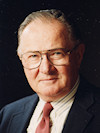 Andrew Laszlo was born László András on January 12, 1926 in Pápa, Hungary... His education in one of Hungary’s best private schools was interrupted by the German occupation of Hungary on March 19, 1944. Shortly after, Mr. Laszlo was conscripted into a forced labor unit of the Hungarian Army. He escaped twice and was recaptured and transported to the Bergen-Belsen Concentration Camp in Germany, Andrew Laszlo was born László András on January 12, 1926 in Pápa, Hungary... His education in one of Hungary’s best private schools was interrupted by the German occupation of Hungary on March 19, 1944. Shortly after, Mr. Laszlo was conscripted into a forced labor unit of the Hungarian Army. He escaped twice and was recaptured and transported to the Bergen-Belsen Concentration Camp in Germany, 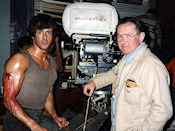 and from there to the Theresienstadt Concentration Camp in Czechoslovakia. Having survived the camps but losing his family, he immigrated to the United States on January 17, 1947. and from there to the Theresienstadt Concentration Camp in Czechoslovakia. Having survived the camps but losing his family, he immigrated to the United States on January 17, 1947.
After a difficult start learning the English language, he continued his childhood infatuation with the camera, working in various jobs that involved photography. He was the first person drafted from New York City during the Korean War and spent two years in the United States Army Signal Corps as a combat cameraman with the rank of Sergeant.
After being honorably discharged from the service Andrew Laszlo eventually established himself as a cinematographer and rose to prominence as one of Hollywood’s top cinematographers. His career in film and television spans nearly fifty years, from the original “PHIL SILVERS SHOW” (Sgt. Bilko) to Walt Disney Pictures “NEWSIES,” "RAMBO: First Blood," "POLTERGEIST II," and "STAR TREK V: The Final Frontier." [read more] and [buy his books and films]
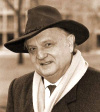 Dr.
Adam Makkai is Professor Emeritus, Syntax, poetics, general linguistics
at the University of Illinois. Dr.
Adam Makkai is Professor Emeritus, Syntax, poetics, general linguistics
at the University of Illinois.
Dr. Ádám Makkai participated in the 1956 Hungarian Revolution
as a college student. After the Soviet army crushed the Revolution, he
emigrated to the United States, where he received a B.A. from Harvard,
and an M.A. and Ph.D. from Yale. Adam Makkai's current interests include
the history of lexicography, the present state of the art and its possible
future development with the arrival of the electronic age. He is engaged
in translating Hungarian poetry into English (two volumes have appeared)
and continues to research appropriate ways to render Hungarian poetry
in English to best advantage. See his personal
site and the University
of Illinois site.
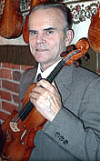 Dr.
Joseph Nagyvary, Professor of Biochemistry at Texas A&M University
and father of the "Nagyvarius" violin, was born in
1934 in Hungary in the quaint university town Szeged, whose most celebrated
citizen was Albert Szentgyorgyi, the discoverer of vitamin C and much
of the citric acid cycle. Thus, his inspiration came early and naturally
to follow a career in natural products and biochemistry. In the years
1952-1956 he attended the Eotvos Lorand University of Budapest majoring
in organic chemistry, though he enjoyed most those classes offered by
physics professor Istvan Cornidesz. Dr.
Joseph Nagyvary, Professor of Biochemistry at Texas A&M University
and father of the "Nagyvarius" violin, was born in
1934 in Hungary in the quaint university town Szeged, whose most celebrated
citizen was Albert Szentgyorgyi, the discoverer of vitamin C and much
of the citric acid cycle. Thus, his inspiration came early and naturally
to follow a career in natural products and biochemistry. In the years
1952-1956 he attended the Eotvos Lorand University of Budapest majoring
in organic chemistry, though he enjoyed most those classes offered by
physics professor Istvan Cornidesz.
Scientific American writes: "Joseph Nagyvary set the world of violinmaking
afire in 1977 with his research into the legendary Stradivarius violins.
The instruments made by Antonio Stradivari in the 17th and 18th century,
along with other instruments made in the northern Italian city of Cremona,
are widely recognized by violinists as superior to any made since. Controversially,
Nagyvary suggested that the chemistry of the instruments is as—or
more—important than their craftsmanship.
A native of Hungary, Nagyvary fought briefly as a guerrilla in an unsuccessful
student movement against the Communists in 1956 and afterward fled to
Zurich. There he studied chemistry under Nobel laureate Paul Karrer and
had his first formal violin lessons on a violin that once belonged to
Albert Einstein, which sparked his infatuation with the violin and helped
to turn his attention toward the science behind music. "I remember
that taking out the violin from its glass cabinet was almost a religious
experience for me," Nagyvary says. "I often wondered if he Einstein
was considering at all what made its sound so pleasing and sonorous, or
whether he was thinking about the waves of the universe."
In 2005, Dr. Nagyvary was the headline/speaker at the
Albert Einstein Centennial celebration by the Japanese Physical Society
in Tokyo, December 13. He received the gold medal for
his discovery of micro-and nanocomposites in Stradivari violins. [read
full Scientific American interview] or visit his official site [Nagyvary
Violins]
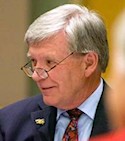 T. Zane Reeves, Ph.D., served in Brazil in the Peace Corps. His graduate work was at UCLA and USC. He taught at Pepperdine and California State, Dominguez Hills, before moving to the University of New Mexico, where he retired as Regents’ Professor Emeritus. Zane visits Hungary often where he is a board member of the Julius Rézler Foundation in Budapest. He also is the author of a number of books, including From Budapest to Albuquerque: The American Life of Julius Rézler and says, “I was told this story by Hungarians and wanted to pass it on.” T. Zane Reeves, Ph.D., is pleased to announce the release of his new book "Shoes Along the Danube" which refers to the memorial of cast iron shoes that honor Hungarian Holocaust victims. Based on a true story, this amazing book follows the lives of two extended Hungarian families, the Rézlers and the Földes, one gentile and the other Jewish, through three decades. It includes the story of Col. Ferenc Koszorus and the battle against Nazi forces. [read more] T. Zane Reeves, Ph.D., served in Brazil in the Peace Corps. His graduate work was at UCLA and USC. He taught at Pepperdine and California State, Dominguez Hills, before moving to the University of New Mexico, where he retired as Regents’ Professor Emeritus. Zane visits Hungary often where he is a board member of the Julius Rézler Foundation in Budapest. He also is the author of a number of books, including From Budapest to Albuquerque: The American Life of Julius Rézler and says, “I was told this story by Hungarians and wanted to pass it on.” T. Zane Reeves, Ph.D., is pleased to announce the release of his new book "Shoes Along the Danube" which refers to the memorial of cast iron shoes that honor Hungarian Holocaust victims. Based on a true story, this amazing book follows the lives of two extended Hungarian families, the Rézlers and the Földes, one gentile and the other Jewish, through three decades. It includes the story of Col. Ferenc Koszorus and the battle against Nazi forces. [read more]
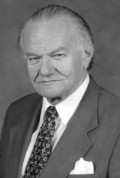 Dr.
Francis Robicsek is Chairman of the Department of Thoracic and Cardiovascular
Surgery at Carolinas Medical Center; Medical Director of the Carolinas
Heart Institute; and Professor of Surgery at the University of North Carolina,
Chapel Hill. He is certified by the Hungarian Board of Surgery,
the American Board of Thoracic & Cardiovascular Surgery, the American
Board of Surgery, and the European Board of Cardiovascular Surgery. Dr.
Robicsek is originally from Miskolc, Hungary but has lived in Charlotte,
North Carolina since 1956. Dr.
Francis Robicsek is Chairman of the Department of Thoracic and Cardiovascular
Surgery at Carolinas Medical Center; Medical Director of the Carolinas
Heart Institute; and Professor of Surgery at the University of North Carolina,
Chapel Hill. He is certified by the Hungarian Board of Surgery,
the American Board of Thoracic & Cardiovascular Surgery, the American
Board of Surgery, and the European Board of Cardiovascular Surgery. Dr.
Robicsek is originally from Miskolc, Hungary but has lived in Charlotte,
North Carolina since 1956.
Dr. Robicsek’s accomplishments are as numerous as they are diverse.
He is Past Governor, American College of Cardiology of North Carolina;
a member of the Scientific Council of the Cardiothoracic Institute of
Monaco; and Past Chairman, Committee on Medico-Legal Affairs, Society
of Thoracic Surgeons. Dr. Robicsek is a Past Examiner for the American
Board of Thoracic Surgery and is a member of many professional societies
including the American Association for Thoracic Surgery, the Society of
Thoracic Surgeons, the American College of Surgeons, the American Vascular
Society and many more. He is Past President of the Southern Thoracic Surgical
Society and is an Honorary Member of the German Society of Thoracic Surgery,
the Scandinavian Society of Thoracic Surgery, most recently the European
Society for Cardio Vascular Surgery, the Surgical Society of Guatemala,
and the Surgical Society of Costa Rica, to name a few.
Dr. Robicsek was elected Citizen of the Year by the state of North Carolina
in 1976, and listed among the 100 Carolinians of the Century by the Charlotte
Observer in 1999. He received the Order of the Quetzal, Rank of Commander,
Guatemala, and is a recipient of the Justus-Liebig Medal of Distinction,
Justus-Liebig University. He is an Honorary Doctor of Humane Letters,
Queens College and a member of the James Duke Society, Duke University.
He was listed in The Best Doctors in America in 1995 and 1996.
Dr. Robicsek has published seven books and written more than 600 papers
in medicine, anthropology and bioengineering, and has presented more than
500 lectures at national and international meetings. Dr. Robicsek has
provided surgical assistance and training in several foreign countries
and provided equipment and helped build hospitals in many third world
countries.
Dr.Robicsek is an avid collector of art and established the Pre-Columbian
collection at the Mint Museum of Art in Charlotte, NC. He also has a noted
collection of Spanish-Colonial art, Medieval Dutch paintings and Russian
icons and has written several books on Pre-Columbian art. He is married
to Dr. Livia K. Robicsek and has four children, Steven, Susanne, John
and Frances, and 5 grandchildren. 
On
November 1, 2007, Dr. Robicsek becomes the first physician to receive
the World Citizen Award given by the World Affairs Council. [Click
here] to download the invitation and attend this gala awards dinner.
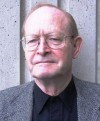 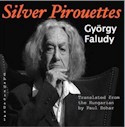 Paul Sohar made his way as a young student refugee from Hungary to the USwhere he abandoned his formal education with a BA degree in philosophy with chemistry as his minor. The latter subject turned out to be the basis of his daytime job with a drug company while he hoped to pursue his literary interests. He would go on to not only publish his own poetry, but to translate into English the works of great Hungarian and Transylvanian poets. Paul Sohar made his way as a young student refugee from Hungary to the USwhere he abandoned his formal education with a BA degree in philosophy with chemistry as his minor. The latter subject turned out to be the basis of his daytime job with a drug company while he hoped to pursue his literary interests. He would go on to not only publish his own poetry, but to translate into English the works of great Hungarian and Transylvanian poets.
January 2013 saw the publication of a collection of Faludy poems in his translation: "Silver Pirouettes" by The Write Deal publisher as an e-book. [read more].
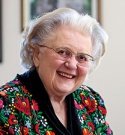 AHF Member, the
Honorable Helen M. (Ilona) Szablya (pronounced Sub-yuh, meaning "sabre") is the Honorary Consul of the Republic
of Hungary for the States of Washington, Oregon, and Idaho based in Seattle.
Born and raised in Budapest, Hungary, she is an award-winning author,
columnist, translator, lecturer, and former publisher of Hungary International,
a newsletter for Americans about business in Hungary. She has two university
degrees, AHF Member, the
Honorable Helen M. (Ilona) Szablya (pronounced Sub-yuh, meaning "sabre") is the Honorary Consul of the Republic
of Hungary for the States of Washington, Oregon, and Idaho based in Seattle.
Born and raised in Budapest, Hungary, she is an award-winning author,
columnist, translator, lecturer, and former publisher of Hungary International,
a newsletter for Americans about business in Hungary. She has two university
degrees, 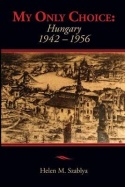 speaks six languages, and lived in five countries under seven
different political systems. The number of her English language publications
exceeds 700, many of which won awards. Szablya Consultants, Inc. is her
translation and consulting agency. Two of her latest books include,
"The Fall of the Red Star" (a story of the 1956 Hungarian Revolution through the eyes of an "illegal"
boy scout troop), and "My Only Choice: Hungary 1942-1956,"
the story of what happened to her and the pursuit of freedom as lived through the coming of age journey of a seven year old little girl who becomes a woman and mother in Hungary. [Read more about her] and purchase her books on AHF's Amazon Store! speaks six languages, and lived in five countries under seven
different political systems. The number of her English language publications
exceeds 700, many of which won awards. Szablya Consultants, Inc. is her
translation and consulting agency. Two of her latest books include,
"The Fall of the Red Star" (a story of the 1956 Hungarian Revolution through the eyes of an "illegal"
boy scout troop), and "My Only Choice: Hungary 1942-1956,"
the story of what happened to her and the pursuit of freedom as lived through the coming of age journey of a seven year old little girl who becomes a woman and mother in Hungary. [Read more about her] and purchase her books on AHF's Amazon Store! 
 Balazs
Szabo, is a world-renowned artist and "1956 refugee #M14543."
In the aftermath of the bloody Hungarian Revolution, the Szabo family
was under Hungarian AVO house arrest. On November 20, they fled toward
the Austrian border. The turmoil of WWII and the Hungarian Revolution
and their impacts on him and his family influenced Balazs, the younger
son of one of Hungary's most celebrated young classical actors Sandor
Szabo, greatly. Balázs and his family fled the country separately
during the 1956 Revolution and were reunited in America. He has written
a historical memoir about his dramatic escape from Hungary "A Knock
In the Night." Balazs
Szabo, is a world-renowned artist and "1956 refugee #M14543."
In the aftermath of the bloody Hungarian Revolution, the Szabo family
was under Hungarian AVO house arrest. On November 20, they fled toward
the Austrian border. The turmoil of WWII and the Hungarian Revolution
and their impacts on him and his family influenced Balazs, the younger
son of one of Hungary's most celebrated young classical actors Sandor
Szabo, greatly. Balázs and his family fled the country separately
during the 1956 Revolution and were reunited in America. He has written
a historical memoir about his dramatic escape from Hungary "A Knock
In the Night."
 Balázs
Szabo's career, first in commercial art and later in fine art, has taken
him all over the United States from Hawaii to Connecticut. While the artist
currently resides in Raleigh, North Carolina, his experience of living
under communist oppression resonates with many different ethnic groups
who have shared similar circumstances. It is this perspective and his
childhood, spent in the midst of artists and actors, that give him a unique
vision of the world. Balázs
Szabo's career, first in commercial art and later in fine art, has taken
him all over the United States from Hawaii to Connecticut. While the artist
currently resides in Raleigh, North Carolina, his experience of living
under communist oppression resonates with many different ethnic groups
who have shared similar circumstances. It is this perspective and his
childhood, spent in the midst of artists and actors, that give him a unique
vision of the world.
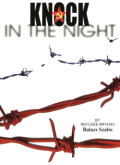 At
the age of 23, Balázs was commissioned to paint a portrait of McDonald's
hamburger king Ray Kroc. Along with portraits, he has done numerous murals
in public buildings and businesses from coast to coast. His works are
in museum, corporate and private collections. Balázs paints in
a variety of styles, but is known in particular for his "fantastic
realism" style, which draws its inspiration from the Flemish master
of the 15th century, Hieronymous Bosch and the Surrealists Salvatore Dali
and Max Ernst. His true love is Surrealism. "It is my music. It's
more expressive, intellectual and emotional." It's "my personal
poetry," he says. At
the age of 23, Balázs was commissioned to paint a portrait of McDonald's
hamburger king Ray Kroc. Along with portraits, he has done numerous murals
in public buildings and businesses from coast to coast. His works are
in museum, corporate and private collections. Balázs paints in
a variety of styles, but is known in particular for his "fantastic
realism" style, which draws its inspiration from the Flemish master
of the 15th century, Hieronymous Bosch and the Surrealists Salvatore Dali
and Max Ernst. His true love is Surrealism. "It is my music. It's
more expressive, intellectual and emotional." It's "my personal
poetry," he says.
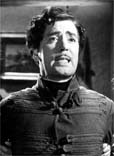 His
father, Sándor Szabó, who learned English within a year,
became the best known actor of Hungarian descent on Broadway and went
on to a prolific career in film and television. His book "Országom,
Visszanyertem én..." chronicles his escape from Hungary in
1956 and his life in New York and Hollywood. See
his filmography on IMDB. His
father, Sándor Szabó, who learned English within a year,
became the best known actor of Hungarian descent on Broadway and went
on to a prolific career in film and television. His book "Országom,
Visszanyertem én..." chronicles his escape from Hungary in
1956 and his life in New York and Hollywood. See
his filmography on IMDB.
 Balazs
joined AHF in May 2006. To help AHF with fundraising, he donated his memoir
as well as his award-winning artbook featuring a 3-D, gold plated cover,
"The Eye of Muse" for the AHF
May Gala in Washington on May 20th. We honored to have him with us! Visit his official site and order "The
Eye of Muse" or commission his work on www.balazsart.com. Balazs
joined AHF in May 2006. To help AHF with fundraising, he donated his memoir
as well as his award-winning artbook featuring a 3-D, gold plated cover,
"The Eye of Muse" for the AHF
May Gala in Washington on May 20th. We honored to have him with us! Visit his official site and order "The
Eye of Muse" or commission his work on www.balazsart.com.
He also published a book entitled, "Knock
in the Night." [Read more] or
buy now on the AHF Amazon Store! 
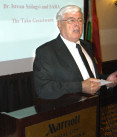 AHF's
Tako Geza Award winner, Dr. Stephen Szilagyi, founded SARA, "Sharing America's Resources Abroad. SARA is a Christian ministry
offering medical assistance to improve lives around the world.From humble
beginnings, SARA has distributed millions of dollars in medical supplies,
services, and medical care, establishing a network of doctors and suppliers
ready to assist the needy. AHF's
Tako Geza Award winner, Dr. Stephen Szilagyi, founded SARA, "Sharing America's Resources Abroad. SARA is a Christian ministry
offering medical assistance to improve lives around the world.From humble
beginnings, SARA has distributed millions of dollars in medical supplies,
services, and medical care, establishing a network of doctors and suppliers
ready to assist the needy.
[Read more] about his book "Habakkuk to SARA: A memoir of the Reverend Stephen Szilagyi and his Founding of the SARA Ministry."
 Dr.
Emery Imre Toth is the last surviving Secretary of the Revolutionary Committee
for the Ministry of Foreign Affairs for the Imre Nagy Government. Dr. Toth served as Co-President of AHF from 2005-2006. He is a Motion
Picture/Video Producer-Director with national and international reputation.
Produced over 250 documentary and feature film projects. He received 38
National and International Awards for Excellence and is a Lifetime and
Honorary Member of the CINE International Film Festival's Board of Directors.
His recent notable production was for the 60th Anniversary of the Holocaust
entitled “Passport to Life.” The Hungarian Embassy featured
it as a premier showing for the occasion of the anniversary. He and his
wife Zsuzsa Kiss-Toth produced a mini-documentary for AHF on the 1956
Hungarian Revolution shown in US Congress and across the country. Dr.
Emery Imre Toth is the last surviving Secretary of the Revolutionary Committee
for the Ministry of Foreign Affairs for the Imre Nagy Government. Dr. Toth served as Co-President of AHF from 2005-2006. He is a Motion
Picture/Video Producer-Director with national and international reputation.
Produced over 250 documentary and feature film projects. He received 38
National and International Awards for Excellence and is a Lifetime and
Honorary Member of the CINE International Film Festival's Board of Directors.
His recent notable production was for the 60th Anniversary of the Holocaust
entitled “Passport to Life.” The Hungarian Embassy featured
it as a premier showing for the occasion of the anniversary. He and his
wife Zsuzsa Kiss-Toth produced a mini-documentary for AHF on the 1956
Hungarian Revolution shown in US Congress and across the country.
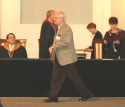 On
October 25, 2005, Dr. Toth received the Golden Diploma from the Eõtvös
Lorand University in honor
of his work and 50 years of professional excellence. / Az Eõtvös
Lorand Tudományegyetem Tanacsa ARANY DIPLOMA-t adomanyozott Dr.
Emery Toth Imre Urnak, 50 even at kifejtett ertekes szakmai tevekenysegenek
elismeresekent. On
October 25, 2005, Dr. Toth received the Golden Diploma from the Eõtvös
Lorand University in honor
of his work and 50 years of professional excellence. / Az Eõtvös
Lorand Tudományegyetem Tanacsa ARANY DIPLOMA-t adomanyozott Dr.
Emery Toth Imre Urnak, 50 even at kifejtett ertekes szakmai tevekenysegenek
elismeresekent.
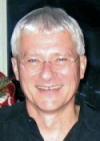 Professor Steven Tötösy de Zepetnek has published much in the area of comparative literature and cultural studies and has taught both in Canada and a number of countries around the world. He taught comparative literature at the University of Alberta 1984-2000. Residing in Boston since 2000, he teaches media and communication studies at the University of Halle-Wittenberg and literature at National Sun Yat-sen University. Tötösy is editor of the Purdue UP humanities and social sciences quarterly CLCWeb: Comparative Literature and Culture http://docs.lib.purdue.edu/clcweb and series editor of the Purdue UP monograph series of Books in Comparative Cultural Studies. [Read more] and see his numerous works. Professor Steven Tötösy de Zepetnek has published much in the area of comparative literature and cultural studies and has taught both in Canada and a number of countries around the world. He taught comparative literature at the University of Alberta 1984-2000. Residing in Boston since 2000, he teaches media and communication studies at the University of Halle-Wittenberg and literature at National Sun Yat-sen University. Tötösy is editor of the Purdue UP humanities and social sciences quarterly CLCWeb: Comparative Literature and Culture http://docs.lib.purdue.edu/clcweb and series editor of the Purdue UP monograph series of Books in Comparative Cultural Studies. [Read more] and see his numerous works.
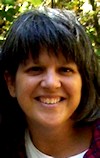 Liz (Szabo) Vos Liz (Szabo) Vos
Liz founded Magyar Marketing in 1988 in response to the requests of Hungarians in the US who were interested in learning about and preserving their Hungarian heritage. Over the years, Elizabeth A. Szabo (her mom) connected with and encouraged those of Hungarian descent to get get engaged with their Hungarian roots. 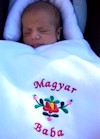 Although her mother passed away in 2008, Magyar Marketing continues to be family owned and operated and is committed to helping you discover, celebrate, and share your Hungarian heritage in a variety of ways. Liz is the second generation to be born in the US (most of her grandparents came from Hungary in the early 1900s) and she nad her husband live in Evansville, IN with their four children. Please check her website at www.magyarmarketing.com which shows her product line as well as information about ways to continue a Hungarian influence in your future generations. Sign up now to receive a catalog of all her great Hungarian-themed products in the mail and her monthly e-newsletter. Although her mother passed away in 2008, Magyar Marketing continues to be family owned and operated and is committed to helping you discover, celebrate, and share your Hungarian heritage in a variety of ways. Liz is the second generation to be born in the US (most of her grandparents came from Hungary in the early 1900s) and she nad her husband live in Evansville, IN with their four children. Please check her website at www.magyarmarketing.com which shows her product line as well as information about ways to continue a Hungarian influence in your future generations. Sign up now to receive a catalog of all her great Hungarian-themed products in the mail and her monthly e-newsletter.
 The
William Penn Association founded on February 21,
1886, is the largest, wealthiest and most successful of all the Hungarian
American fraternal organizations. It's former Chairman of the Board
is AHF President ex-officio Stephen J. Varga and the National President
is George S. Charles, Jr. The William Penn Association was founded in
Hazelton, Pennsylvania, by thirteen Hungarian coal miners. It was chartered
by the State of Pennsylvania in December of that same year under the name The
William Penn Association founded on February 21,
1886, is the largest, wealthiest and most successful of all the Hungarian
American fraternal organizations. It's former Chairman of the Board
is AHF President ex-officio Stephen J. Varga and the National President
is George S. Charles, Jr. The William Penn Association was founded in
Hazelton, Pennsylvania, by thirteen Hungarian coal miners. It was chartered
by the State of Pennsylvania in December of that same year under the name  “Verhovay Aid Association.” The goal of the founders was to
extend a helping hand to each other and to the many Hungarian immigrants
who worked and suffered in the mines and industrial centers of America
at a period in its history when insurance of any sort was still in the
faraway future. With no sick benefits, no unemployment
compensation, and no death benefits for their families, and with the immigrants
being maimed and killed by the thousands in the ever-recurring industrial
accidents, they had no other recourse but to turn to each other for help.
This is how fraternalism was born in America, and these are the same conditions
that prompted the thirteen founders to establish the Verhovay Aid Association. “Verhovay Aid Association.” The goal of the founders was to
extend a helping hand to each other and to the many Hungarian immigrants
who worked and suffered in the mines and industrial centers of America
at a period in its history when insurance of any sort was still in the
faraway future. With no sick benefits, no unemployment
compensation, and no death benefits for their families, and with the immigrants
being maimed and killed by the thousands in the ever-recurring industrial
accidents, they had no other recourse but to turn to each other for help.
This is how fraternalism was born in America, and these are the same conditions
that prompted the thirteen founders to establish the Verhovay Aid Association.
After nearly four decades of growth, and with well over three hundred
chapters throughout the northeastern states, in 1926 the Home Office was
moved to Pittsburgh, Pennsylvania. By this time the Verhovay had grown
into the largest, wealthiest and most successful of all the Hungarian
American fraternal organizations. After numerous mergers, the name of
the joint organization was changed to “William Penn Association”
in 1972.
[READ MORE about the WPA ]
[<< Back to All AHF News]
|
Featured members are selected at random. AHF members come from all walks of life and from different religious and political backgrounds. They join AHF because they believe in working together for common causes and on issues that unite, not divide. This page provides the public a small glimpse at the broad cross section of the community AHF represents. AHF is an all-volunteer, non-partisan, 501(c)(3) non-profit educational and charitable organziation serving the community since 1906! Join and Support Us!
Featured Member Shortcuts:
AHF Store
on 
Help AHF by purchasing all your products using the AHF Amazon Store! You pay nothing
more and AHF earns a small percentage:
[Join online!]

|




 AHF Freedom Circle Member Balint Kacsoh, MD, PhD, is a professor of anatomy, histology and cell biology, and physiology at Mercer Univiersity's Medical School in Macon, GA where he joined the faculty in 1992. He and his wife, a pediatrician in private practice in Macon, both came from Hungary in 1986 and hold dual citizenship. They have three children, the oldest already in university. They are members of the Hungarian Reformed Church.
AHF Freedom Circle Member Balint Kacsoh, MD, PhD, is a professor of anatomy, histology and cell biology, and physiology at Mercer Univiersity's Medical School in Macon, GA where he joined the faculty in 1992. He and his wife, a pediatrician in private practice in Macon, both came from Hungary in 1986 and hold dual citizenship. They have three children, the oldest already in university. They are members of the Hungarian Reformed Church.